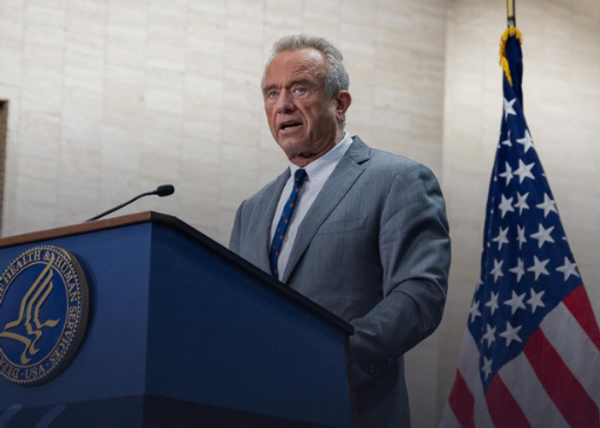

Pink Pilates Princess — if you haven’t become one by going to your weekly workout class, then I’m sure you’ve heard of the term either as an aesthetic or been called one by your 2024 Spotify Wrapped.
Pilates has experienced a significant resurgence, and it’s not just anecdotal. A recent international survey of 800 Pilates instructors revealed that 77 per cent of studios are growing, with 67 per cent reporting sold-out classes.
But over the last couple of years, the workout has gone from a fitness craze to a lifestyle and aesthetic. A Pilates princess is generally associated with thin, young, white women in matching pastel sets, an oversized water bottle in hand, and, of course, a matcha after class.
While many of us have noticed this and perhaps even stayed away from Pilates because we fear not fitting in, one TikTok led to the conversation around size inclusivity in Pilates going viral.
In a now-deleted TikTok video, a creator proclaimed, “If you’re 200 pounds, you shouldn’t be in a Pilates class”.
“You should not be allowed to be a Pilates instructor if you have a gut and you’re fat.”

The backlash came fast and hard (rightfully so). (Credit: TikTok)
The backlash followed suit, and the creator released an apology, saying it was a projection of her personal insecurities. She also said she had lost her gym membership and was told not to return to work.
@lizpuentebravo What a shame given how cute ur sunglasses are … LET THE GIRLS DO PILATES . #plussizepilates #pilates #pilatesworkout #pilatesprincess #skinnytok #pcos #pcosweightloss #pcosworkout #pcospilates Products used @byoma @Glow Recipe @Sunday Riley
♬ original sound – lizpuentebravo
Despite being straight-sized, as someone who has struggled with an eating disorder and has a healthy relationship with exercise, the aesthetic around Pilates and, more specifically, people like the creator make it seem like a space outside of my league.
But the creator’s TikTok also made me question who the workout was initially created for — was it always the skinny white girls?
The origins of Pilates
Pilates was created to rehabilitate soldiers injured in war and later for dancers to enhance their training.
Its founder Joseph Hubertus Pilates was born in Germany and was part of a circus troupe that performed tumbling acts.
The story goes that Pilates and his troupe were taken into custody in England during WWI, where he led daily exercise routines for his inmates.
Following the war, Pilates drew on his experience working with injured soldiers and his studies of various exercise disciplines, including yoga, martial arts, and ancient Greek and Roman exercise techniques. Pilates then created the prototype of what we now know as the Reformer to address physical dysfunction and injury and condition the body.
In the late 1920s, Pilates moved to the US, where he and his wife Clara opened a studio in New York City. The studio attracted dancers, athletes, and celebrities.
However, Kathy Stanford Grant made the popularisation of Pilates possible.
Grant was one of the few Black ballerinas in the 1930s and experienced a significant amount of racism.
She met Pilates after sustaining a knee injury and became one of the only two people to receive certification as an instructor. Grant became the director of the Pilates Gym at Henri Bendel’s Department Store and taught across the US.
Grant shaped Pilates into what we know it to be today; however, her contributions are often sidelined.
Real-world Pilates: more inclusive than it looks?
How did we go from Pilates being popularised by a Black woman, to something that’s so saturated by thin, white women — sometimes to the exclusion of others?
I think we can put this down to two reasons:
Accessibility
The most common price for a Pilates class is $47.
And we know that not everyone can afford that, especially in a cost-of-living crisis.
Studies show that access to recreational facilities and physical activity has also been found to be worse in minority and low-income neighbourhoods.
So, the lack of diversity in class could be linked to the fact that diverse groups are simply less accessible.
Online vs IRL
Another important point to remember is the difference between our algorithms and real life!
Less than 10 per cent of Australian women are straight-sized, while over 37 per cent are plus-sized.
Tilly Langford, a recently accredited Pilates instructor, told PEDESTRIAN.TV that “the stereotypes and aesthetics of Pilates have emerged so strongly because of the people on the internet who fit a conventional beauty standard, and like any other industry, have become kinda the ‘face’ of it because they are the promoted and boosted so much more than others because of their conventional beauty”.
“In a real-world Pilates class, for most studios, I’ll look around and see a genuine range of people of all ages, body sizes, and experience levels. And I really love being part of that.”
@lizpuentebravo Replying to @lizpuentebravo Pilates over 200 pounds ? Let’s talk about it & here is why I made that video …. #plussizepilates #pilates #pilatesworkout #pilatesprincess #skinnytok #pcosweightloss #pcospilates Used @hudabeautyshop @ONE SIZE BEAUTY @Milani Cosmetics @Hourglass Cosmetics @Benefit Cosmetics @Saie @Clarins USA @Charlotte Tilbury @milkmakeup @Beauty Creations Cosmetics
♬ original sound – lizpuentebravo
Langford, who began her Pilates journey during lockdown, says the supportive, non-judgmental environment drew her in. As someone in the mid-size range, she generally feels included, but she remains mindful of how spaces treat people with different body types.
“Instructors are trained to provide adjustments with care and kindness, whether it’s for injuries or other needs,” she adds.
Another Pilates instructor, Elle Gilbert, told PTV that many women avoid movement spaces due to “how gyms and studios make them feel”.
She founded a beginner friendly any.BODY Pilates & Exercise Physiology after experiencing trauma with movement spaces that failed to cater to different levels.
Gilbert organically created this space, initially wanting to create a studio that was more beginner-friendly, given her own trauma with movement spaces that failed to cater to different levels.

any.BODY Pilates & Exercise Physiology is a Brisbane-based Pilates studio that offers a holistic approach to movement. (Credit: Supplied)
She says that in many cases, regardless of the size of their body, women like herself experience trauma in movement spaces.
“They end up avoiding movement altogether because of how gyms and studios make them feel.”
She says many “Pilates and gyms out there are really catering to 1 per cent of the market” but understands that some teachers may not be equipped with the correct skills to support people of all abilities.
Looking back to the origins of Pilates as a form of rehabilitation for injured soldiers and enhancement for dancers, it’s clear that the aesthetic and stereotype of Pilates has strayed far from its roots.
However, what Langford and Gilbert are doing also shows us that active work is being done to change the exclusionary narrative that has dominated Pilates in the last few years.
And there is quite a lot of work to be done as locating size-inclusive, First Nations led or POC Pilates studios and instructors continues to be difficult.
Whether you are looking to try out a class or fully embrace being a Pilates Princess, here are a few studios/accounts that embrace inclusivity:
- The National Centre of Indigenous Excellence in Redfern, Sydney. This not-for-profit organisation is built on the land of the Gadigal people of the Eora Nation. It works to provide strong futures for Aboriginal and Torres Strait Islander communities through wellness and fitness initiatives.
- @wellnessbyNorah on TikTok
- Core Pilates in Singleton, NSW
- Scout Pilates in Marrickville, NSW
- Haven Wellness in Summer Hill, NSW
- KIC – online
- Muse Pilates Studio – QLD, NSW and ACT
The post Who Exactly Is Pilates For? And When Did It Become So Exclusionary? appeared first on PEDESTRIAN.TV .







